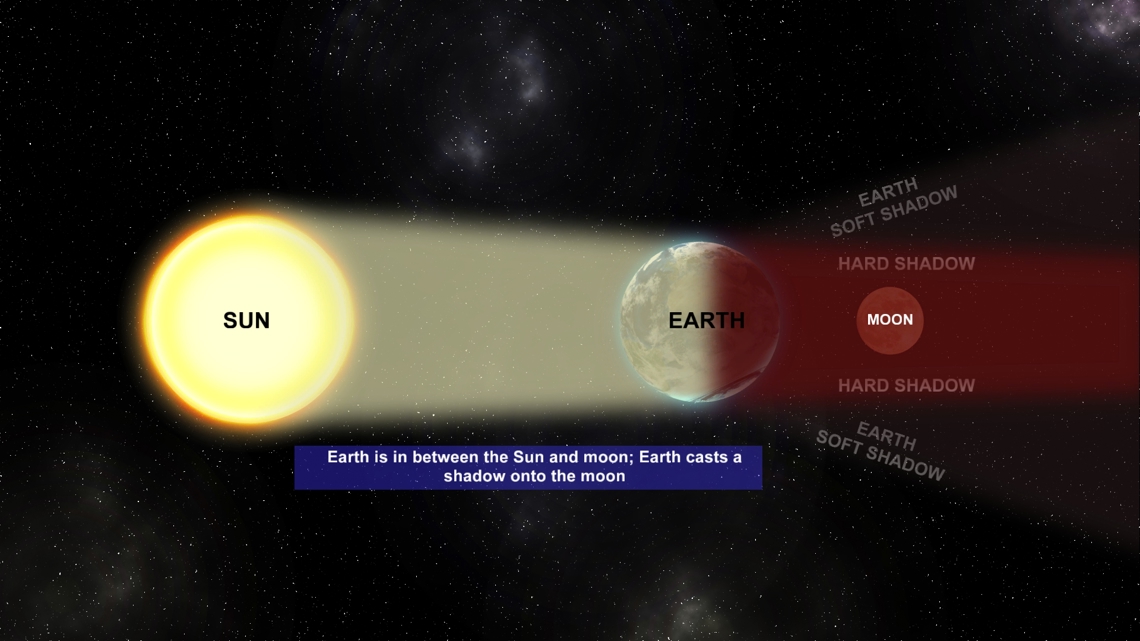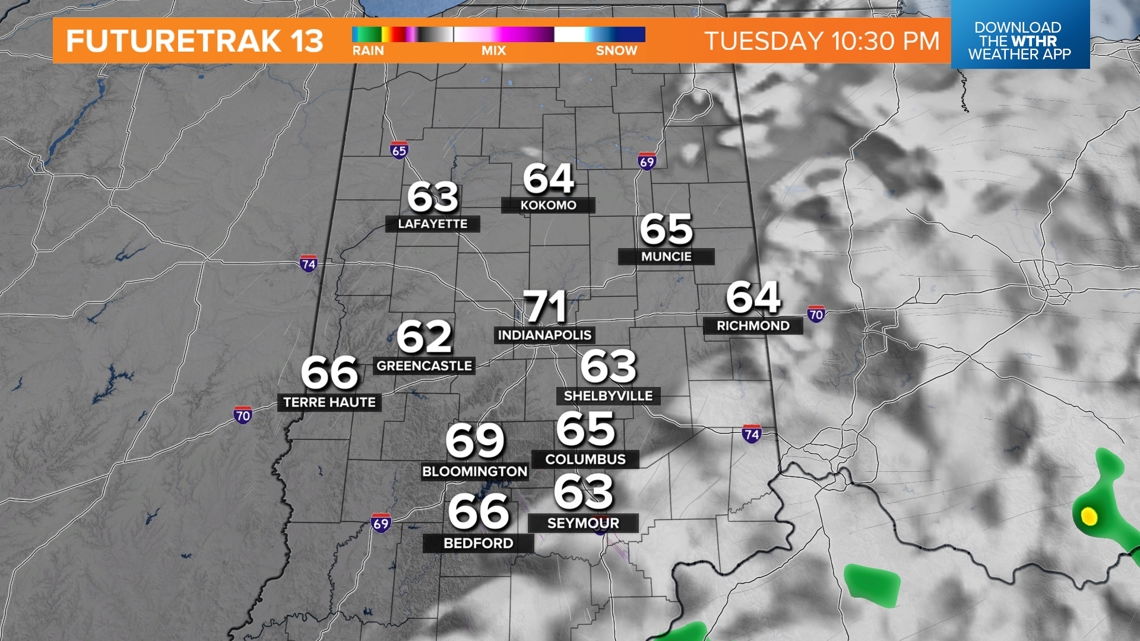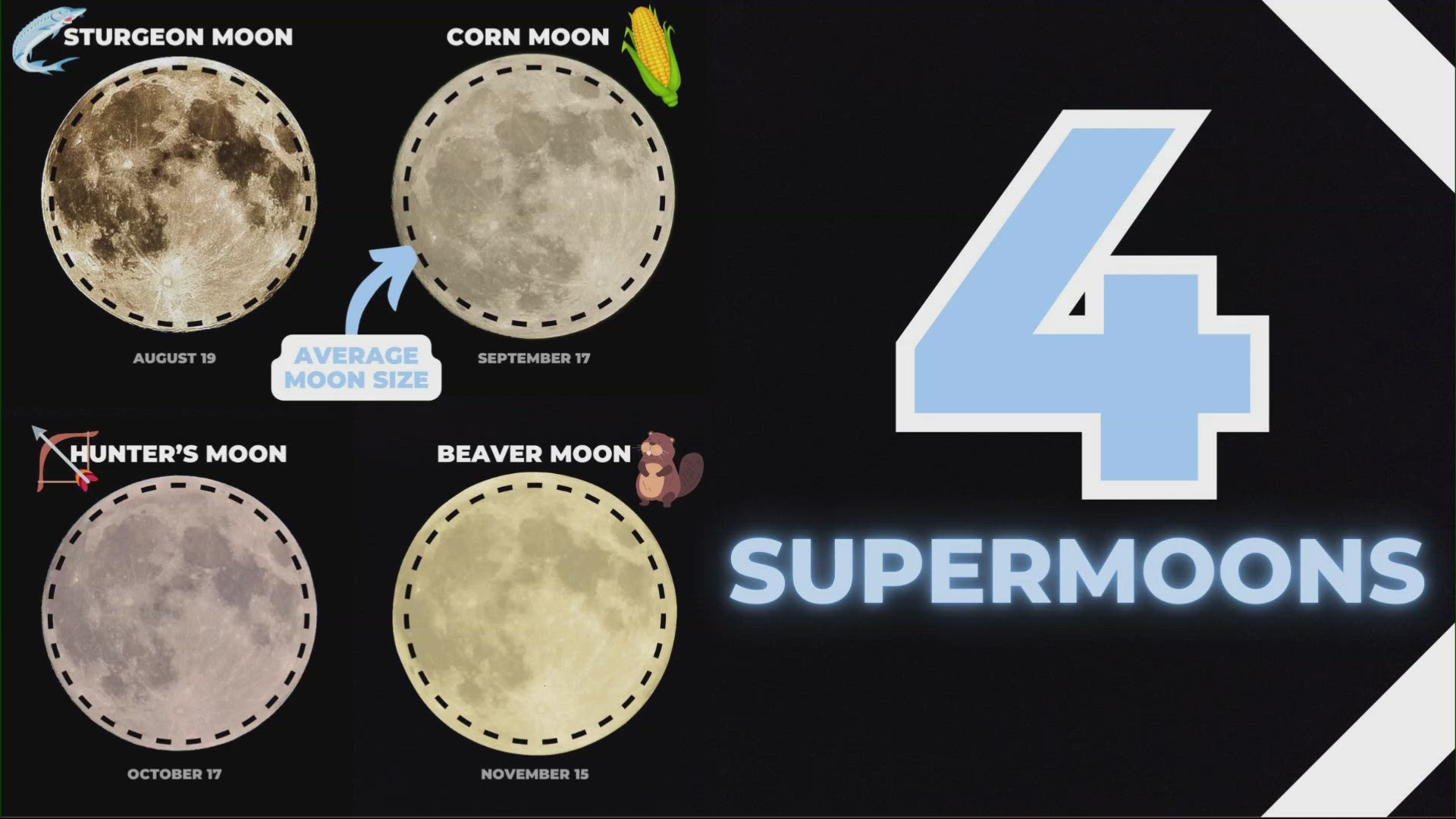INDIANAPOLIS — This year's "Harvest Moon" will appear 30% brighter and feature a partial lunar eclipse Tuesday evening.
What is the "Harvest Moon?"
"Harvest Moon" is the name given to the full moon closest to the autumnal equinox, which falls on Sept. 22 this year. According to NASA, the term dates back to before electricity, when farmers depended on the moon's natural light to harvest their crops late into the night. The full moon was particularly important at the beginning of fall, when harvests are the largest.
Why will it appear 30% brighter?
This full moon is considered a "supermoon." The moon's orbit around the earth is an ellipse, not a perfect circle. A full moon is considered a supermoon when it comes within 90% of its closest point to Earth.
According to NASA, the closest supermoons appear "about 17% bigger and 30% brighter" than the furthest, faintest moon of the year.
Supermoons happen only three or four times a year. There are four this year. Tuesday's supermoon will be nearly 3,000 miles closer than August's "blue" supermoon. October’s supermoon will be the year’s closest at 222,055 miles (357,364 kilometers) from Earth, followed by November’s supermoon at a distance of 224,853 miles (361,867 kilometers).
What causes a partial lunar eclipse?
A lunar eclipse occurs when the moon, sun and Earth are in alignment and the Earth casts a shadow onto the moon. There are two types of lunar eclipses, a total lunar eclipse when the moon is completely inside the darkest part of the Earth's shadow (called the umbra), which creates a reddish tint to the moon and are often nicknamed "blood moons." This will be a partial lunar eclipse, which is when the moon is only partially covered by Earth's shadow.


When will the partial lunar eclipse occur and where will it be in the sky?
For central Indiana, at the time of the partial lunar eclipse, the moon will be located in the southeast sky about 30 degrees above the horizon. The partial lunar eclipse is a global event and will occur at the same "universal" time. For the eastern daylight time zone we're in:
- Penumbral eclipse begins: 8:41 p.m. EDT on Tuesday, Sept. 17
- Partial eclipse begins: 10:12 p.m. EDT on Tuesday, Sept. 17 – a slight shadow will begin to appear
- Greatest eclipse: 10:44 p.m. EDT on Tuesday, Sept. 17 – 8% of the moon in the Earth's full shadow, appearing like a bite has been taken out of the moon
- Partial eclipse ends: 11:15 p.m. EDT on Tuesday, Sept. 17
- Penumbral eclipse ends: 12:47 a.m. EDT on Wednesday, Sept. 18
Will the sky be clear to see it?
For most of the area, the sky will be mostly clear. There will be some increased clouds for our southeastern-most counties, though.



